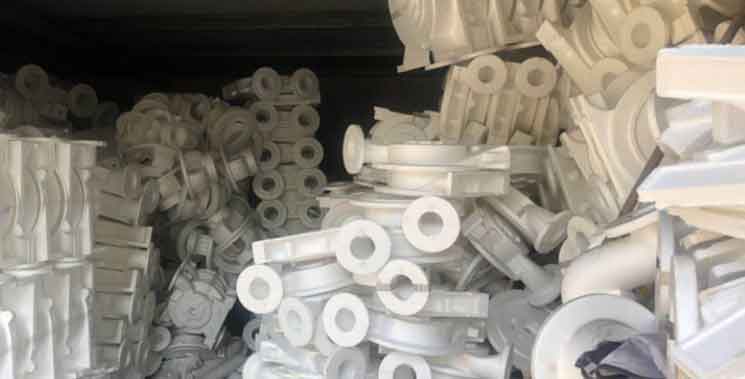Lost foam casting is a manufacturing process that offers a unique combination of complexity and cost efficiency, making it a preferred method for producing complex metal components. Here’s how lost foam casting achieves both complexity and cost efficiency:

- Complexity of Design: Lost foam casting allows for the production of highly complex and intricate designs with relative ease. The foam patterns used in the process can be easily shaped and manipulated to create intricate details, thin walls, and internal cavities that would be difficult or impossible to achieve with other casting methods. This design freedom enables the production of components with complex geometries and integrated features, such as cooling channels or internal reinforcements.
- Near-Net Shape Casting: Lost foam casting produces near-net shape components, reducing the need for extensive post-casting machining or finishing operations. The foam pattern accurately replicates the final shape of the component, minimizing material wastage and saving time and cost associated with material removal. This near-net shape capability improves cost efficiency by reducing material usage and machining time.
- Reduced Tooling Costs: Lost foam casting eliminates the need for complex and expensive molds and cores used in other casting methods. The foam patterns can be easily produced using inexpensive molds or even 3D printing techniques, reducing the initial investment required for tooling. This significantly reduces tooling costs, making lost foam casting an attractive option for small to medium-scale production or for prototyping.
- Efficient Production Process: Lost foam casting is a highly efficient production process compared to other casting methods. The absence of cores and parting lines simplifies the casting process and reduces the number of steps involved. This streamlined process saves time, reduces labor costs, and improves overall production efficiency. Additionally, the ability to produce multiple components in a single mold further enhances productivity and cost efficiency.
- Reduced Post-Casting Operations: Lost foam castings often require minimal post-casting operations due to their high dimensional accuracy and excellent surface finish. The elimination of cores and parting lines eliminates the need for core removal and reduces the need for extensive machining or finishing processes. This reduces the overall production time, labor, and costs associated with post-casting operations.
- Material and Energy Efficiency: Lost foam casting allows for precise control over material usage, resulting in efficient material utilization. The foam patterns can be designed to optimize material distribution and minimize waste. Additionally, the use of low-density foam patterns reduces the overall weight of the casting, making it a lightweight and material-efficient solution. The reduced weight also leads to energy savings during transportation and use.
- Design for Assembly: Lost foam casting facilitates the integration of multiple components or features into a single cast, reducing the need for separate parts and assembly operations. This design-for-assembly approach simplifies the assembly process, reduces assembly time, and improves overall cost efficiency.
The combination of complexity and cost efficiency in lost foam casting makes it an attractive option for various industries, including automotive, aerospace, machinery, and art. By achieving intricate designs and reducing material waste, tooling costs, and post-casting operations, lost foam casting offers an efficient and cost-effective solution for producing complex metal components.
